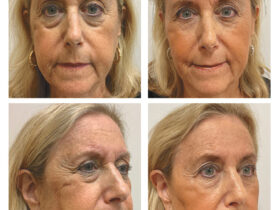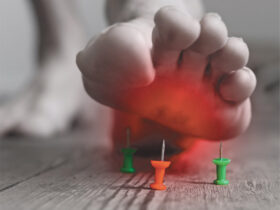By Taryn Kean, CCT Level III –
 Q. What is DITI?
Q. What is DITI?
A. DITI or “Digital Infrared Thermal Imaging” is an imaging technique for measuring and displaying body temperature. It is a key diagnostic tool in the detection of disease, injury and infection. There is a high degree of thermal symmetry in a normal healthy body. Subtle abnormal temperature asymmetries can be easily identified that may be attributed to pathology or dysfunction.
Q. What role does DITI play in breast health?
A. DITI’s purpose in breast cancer and other breast disorders is to help in early detection and monitoring of abnormal physiology and the establishment of risk factors for the development or existence of cancer. Thermography has the ability to show the vascular and lymphatic changes within breast tissue associated with developing pathology often before they are detectable with other standard structural testing.
Q. Who should have this test?
A. DITI is especially appropriate in women ages 30-50 where breast cancers grow significantly faster and denser breast tissue makes it more difficult for mammography to pick up suspicious lesions. This test can provide a clinical marker to the doctor that a specific area of the breast needs particularly close examination. Thermography is designed to improve chances for detecting fast-growing, active tumors in the intervals between mammographic screenings or when mammography is not indicated by screening guidelines for women less than 50 years of age; however women over the age of 50 can certainly benefit from annual thermography screenings as well.
Q. Is a thermal scan different than a mammogram or ultrasound?
A. Yes. Unlike mammography and ultrasound, Digital Infrared Thermal Imaging (DITI) is a test of physiology and function. Mammography and ultrasound are tests of anatomy and structure. A mammogram, ultrasound, or DITI cannot diagnose cancer. This is possible only through a biopsy. When DITI, mammograms, ultrasounds, and clinical exams are used together, the best possible evaluation of breast health can be made. The goal of DITI is early detection. The benefits of DITI are that it is non-invasive, radiation free, painless and economical.
Q. Is thermal imaging a replacement for mammography or ultrasound?
A. DITI should be viewed as a complimentary, not competitive, tool to mammography and ultrasound. DITI has the ability to identify patients at the highest level of risk and actually increase the effective usage of mammograms and ultrasounds. Research confirms that DITI, when used with mammography, can improve the sensitivity of breast cancer detection. The ultimate choice should be made on an individual basis with regard to clinical history, personal circumstances, and medical advice.
Q. How is my breast baseline or “thermal fingerprint” established?
A. In order to establish what is “normal” for you, two breast studies must be done three months apart. If there are no changes in your thermal patterns in comparing the two studies, we can assume we have established your baseline. These baseline images will then be archived for annual comparison. Please note, however, that a baseline cannot be established during pregnancy or lactation due to the various physiologic changes occurring within the breast tissue associated with these conditions.
Q. Why do I need to come back in three months for another breast study?
A. The most accurate result we can produce is change over time. Before we can start to evaluate any changes, we need to establish an accurate and stable baseline for you. This baseline represents your unique thermal fingerprint, which will only be altered by developing pathology. A baseline cannot be established with only one study, as we would have no way of knowing if this is your normal pattern or if it is actually changing at the time of the first exam. By comparing two studies three months apart we are able to judge if your breast physiology is stable and suitable to be used as your normal baseline and safe for continued annual screening. The reason a three-month interval is used relates to the period of time it takes for blood vessels to show change. A period of time less than three months may miss significant change while a period of time much more than three months can miss significant change that may have already taken place. There is NO substitute for establishing an accurate baseline. A single study cannot do this.
Q. If I have a suspicious mammogram or breast lump should I have a thermal scan?
A. Yes. The information provided by a thermography study can contribute useful additional information which ultimately helps your doctor with case management decisions. It is also instrumental in the progress of any treatment protocol.
Q. Do I need my doctor’s referral?
A. No, Southwest Medical Thermal Imaging sees patients who are both self and physician referred.
Q. How do I prepare for my thermographic scan?
A. Preparing for your scan is simple, but crucial to the accuracy of the results. Do not have any physical therapy, electromyography, or chiropractic work the same day as your thermography appointment. Do not smoke or participate in vigorous exercise 2 hours before the test. Do not use any lotions, liniments or creams the day of your scan. Avoid strong sunlight exposure the day of your appointment. No change is required in diet or medication.
Q. How long does the procedure take?
A. A breast imaging scan will take about 15 minutes.









